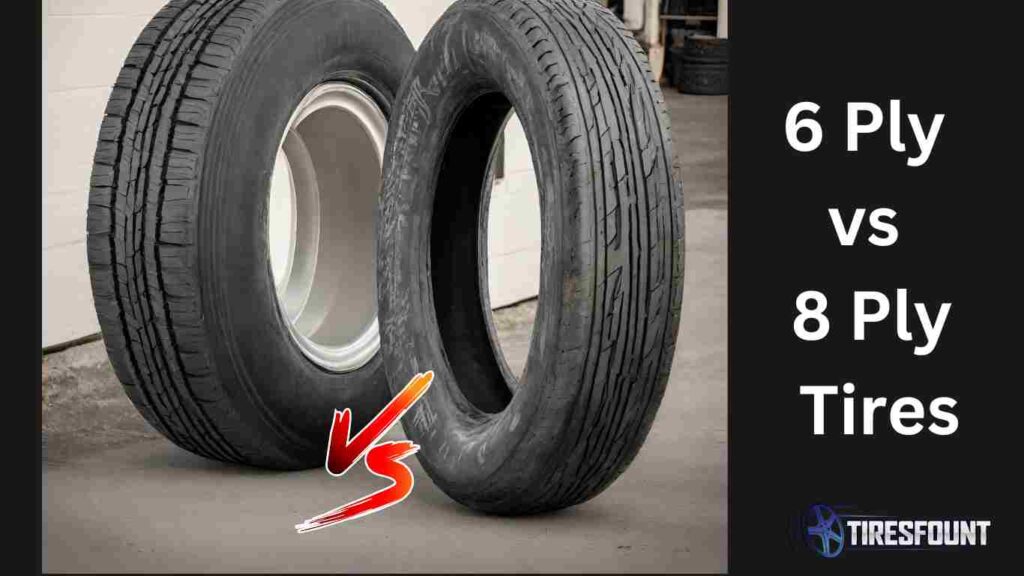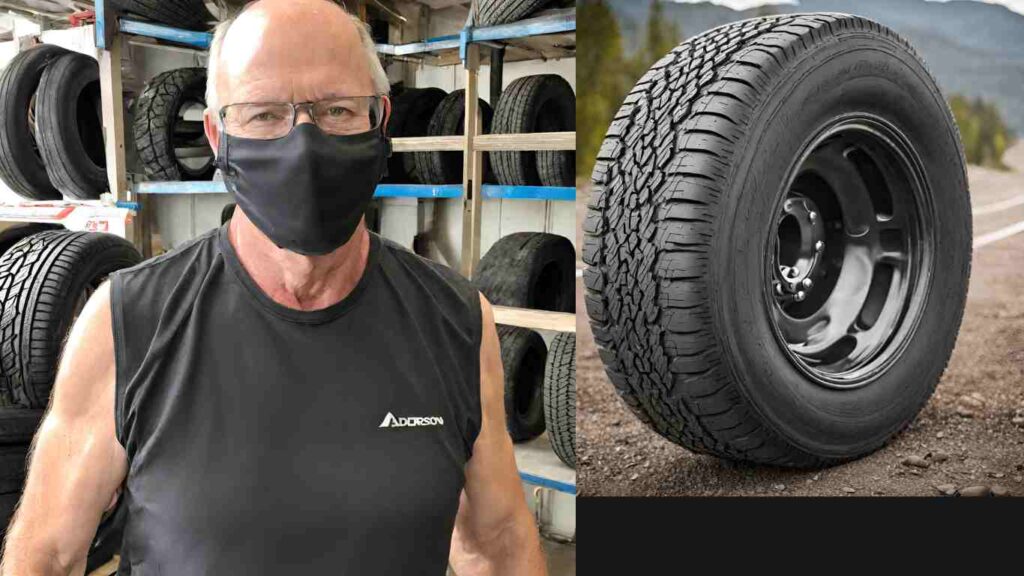The main differences between 6 ply and 8 ply tires lie in their construction, durability, and load capacity. 6 ply tires are generally lighter, less durable, and can support less weight than 8 ply tires.
Looking at the differences, 8 ply tires, also known as load range D tires, are built to withstand heavier loads and tougher conditions.
In contrast, 6 ply tires, or load range C tires, are designed for lighter loads and less strenuous driving conditions.
In the following sections of this article, we will explore these differences in greater detail, providing practical insights for your tire selection process.

6 Ply Vs 8 Ply Tires: An Overview
A basic comparison between 6 ply and 8 ply tires will give you all ideas about these two tires. Here’s a basic comparison table between 6-ply and 8-ply tires.
| Feature | 6-Ply Tires | 8-Ply Tires |
| Construction | Typically have 6 layers of material | Typically have 8 layers of material |
| Strength | Generally less strong than 8-ply tires | Generally stronger and more robust |
| Load Capacity | Lower load-carrying capacity | Higher load-carrying capacity |
| Durability | Slightly less durable than 8-ply tires | More durable and resistant to damage |
| Ride Comfort | Generally provides a smoother ride | May result in a slightly firmer ride |
| Suitability | Suitable for light to moderate loads | Suitable for heavier loads and rough terrain |
6 Ply vs 8 Ply Trailer Tires: Key Differences
When selecting tires for your trailer, understanding the differences between 6 ply vs 8 ply trailer tires is crucial for performance and safety. Here’s a breakdown of the main distinctions.
Comparison Overview
| Feature | 6-Ply Trailer Tires | 8-Ply Trailer Tires |
|---|---|---|
| Construction | 6 layers of material | 8 layers of material |
| Strength | Less strong | Stronger and more robust |
| Load Capacity | Lower load capacity | Higher load capacity |
| Durability | Less durable | More durable |
| Ride Comfort | Smoother ride | Firmer ride |
| Suitability | Light to moderate loads | Heavier loads and rough terrain |
Detailed Differences Between 6 Ply And 8 Ply Tires
Now let’s break down a couple of key points from the comparison table in detail so that you can find the differences between these two fully. Check 8 Ply Vs 10 Ply Tires in Details.
Strength
- 6-Ply Tires: Picture them as the reliable, all-around player. They’re good, but they’re not the heavyweight champions. Think of them as the soccer midfielder who’s great with the ball but might not have the sheer muscle of a center back.
- 8-Ply Tires: Now, these are the heavy lifters. The linebackers of the tire world. They’re beefed up with more layers, making them more robust and ready to handle the tough stuff.
Durability
- 6-Ply Tires: They’re like the sturdy backpack you’ve had for years. It’s been through a lot, but there’s a chance a zipper might give way eventually. Still, it gets the job done for the regular day-to-day stuff.
- 8-Ply Tires: These are the tanks of the tire universe. You can throw almost anything at them, and they’ll shrug it off like it’s nothing. Rocks, potholes, you name it – they can take a beating and keep on rolling.
Ride Comfort
- 6-Ply Tires: Imagine cruising on a smooth highway with your favorite tunes playing. That’s the 6-ply experience – a bit more like gliding on clouds. It might not be as plush as a luxury sedan, but it’s not too shabby.
- 8-Ply Tires: It’s like stepping into a beefed-up off-road vehicle. Sure, the ride might be a bit firmer, more like an adventurous rollercoaster than a lazy river, but you’re ready for action.
Cost
- 6-Ply Tires: These are the budget-friendly buddies. You won’t have to break the bank to get a decent set. It’s like getting a good deal on your favorite snack – satisfying without denting your wallet.
- 8-Ply Tires: Quality comes at a price. Think of them as the top-shelf option, like splurging on that fancy coffee. You pay a bit more, but the experience and performance are worth the investment.
Can You Use 6 Ply And 8 Ply Tires Interchangeably?
You can use them interchangeably but you will find some issues. That’s why it’s not recommended to interchange 6-ply and 8-ply tires on a vehicle. Here are a few reasons that I find that you should think seriously before you decide to use them interchangeably.

Load Capacity Difference
8-ply tires are designed to carry heavier loads compared to 6-ply tires. If you use a tire with a lower ply rating than recommended for your vehicle,
it may not be able to handle the weight properly, leading to issues like increased tire wear, reduced stability, and potential safety hazards.
Durability and Strength Issue
8-ply tires are generally constructed to be more robust and durable than 6-ply tires.
Using a tire with a lower ply rating than specified for your vehicle may reduce damage resistance, increase vulnerability to punctures, and a shorter overall lifespan.
Handling and Performance
Tires are a critical component of a vehicle’s suspension and handling characteristics.
Mixing different ply-rated tires can lead to imbalances in handling, traction, and overall performance. This can affect the vehicle’s stability, especially in challenging driving conditions.
Safety Concerns
Tires play a crucial role in the safety of a vehicle. Using tires with different ply ratings may compromise the vehicle’s braking performance, responsiveness, and overall safety.
It’s essential to follow the manufacturer’s recommendations for tire specifications to ensure optimal safety.
So, Which is the Best Choice for You?
The choice between 6-ply and 8-ply tires depends on your ride, where you’re going, and what you’re hauling.
It’s all about finding the right fit for your wheels and your adventures.
It’s always best to consult your vehicle’s owner’s manual or contact the manufacturer to determine the recommended tire specifications for your specific make and model.
This ensures that you choose tires that meet the vehicle’s requirements for load capacity, size, and performance, contributing to a safe and smooth driving experience.
Must Check our Ply Comparision
